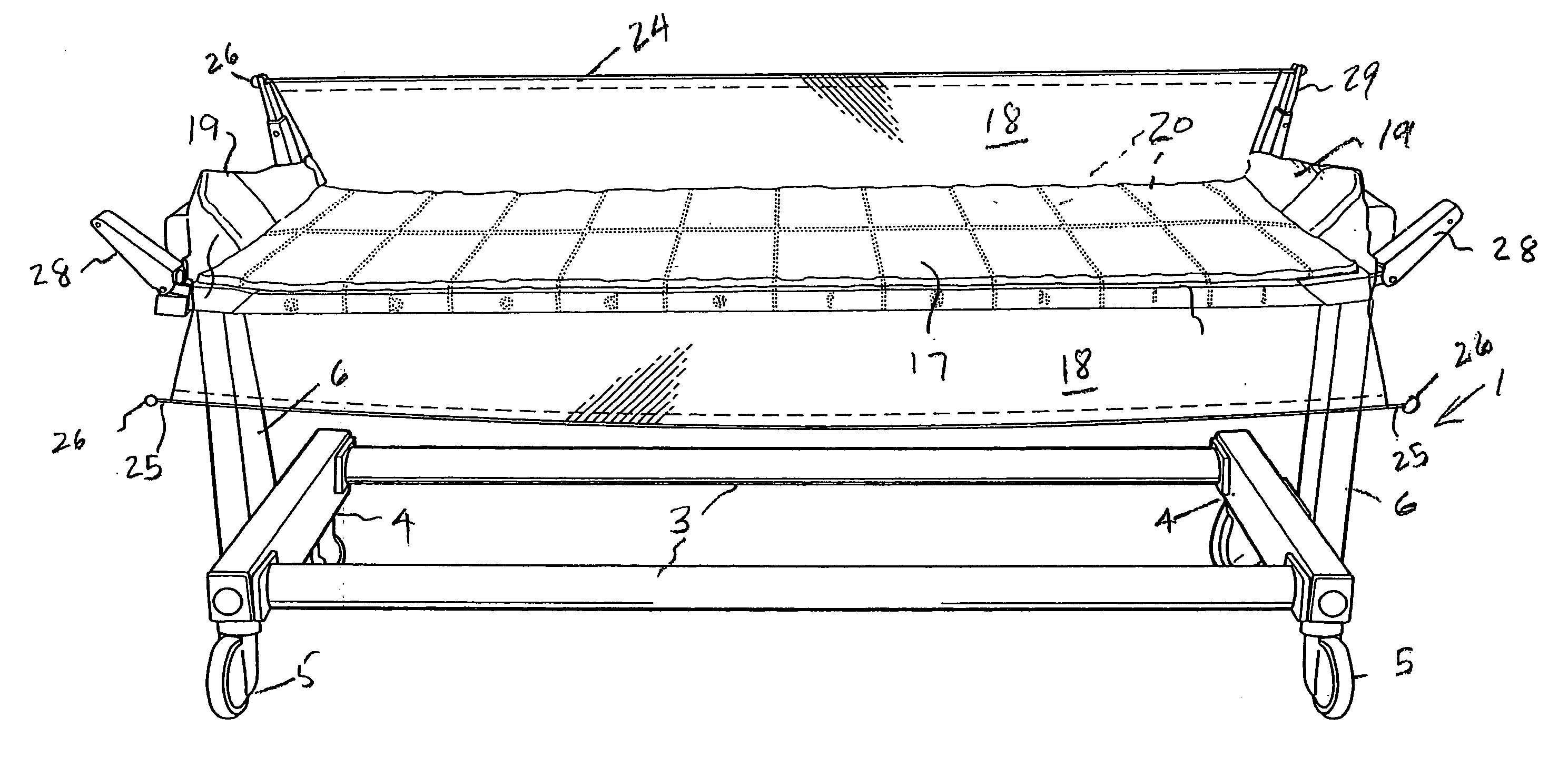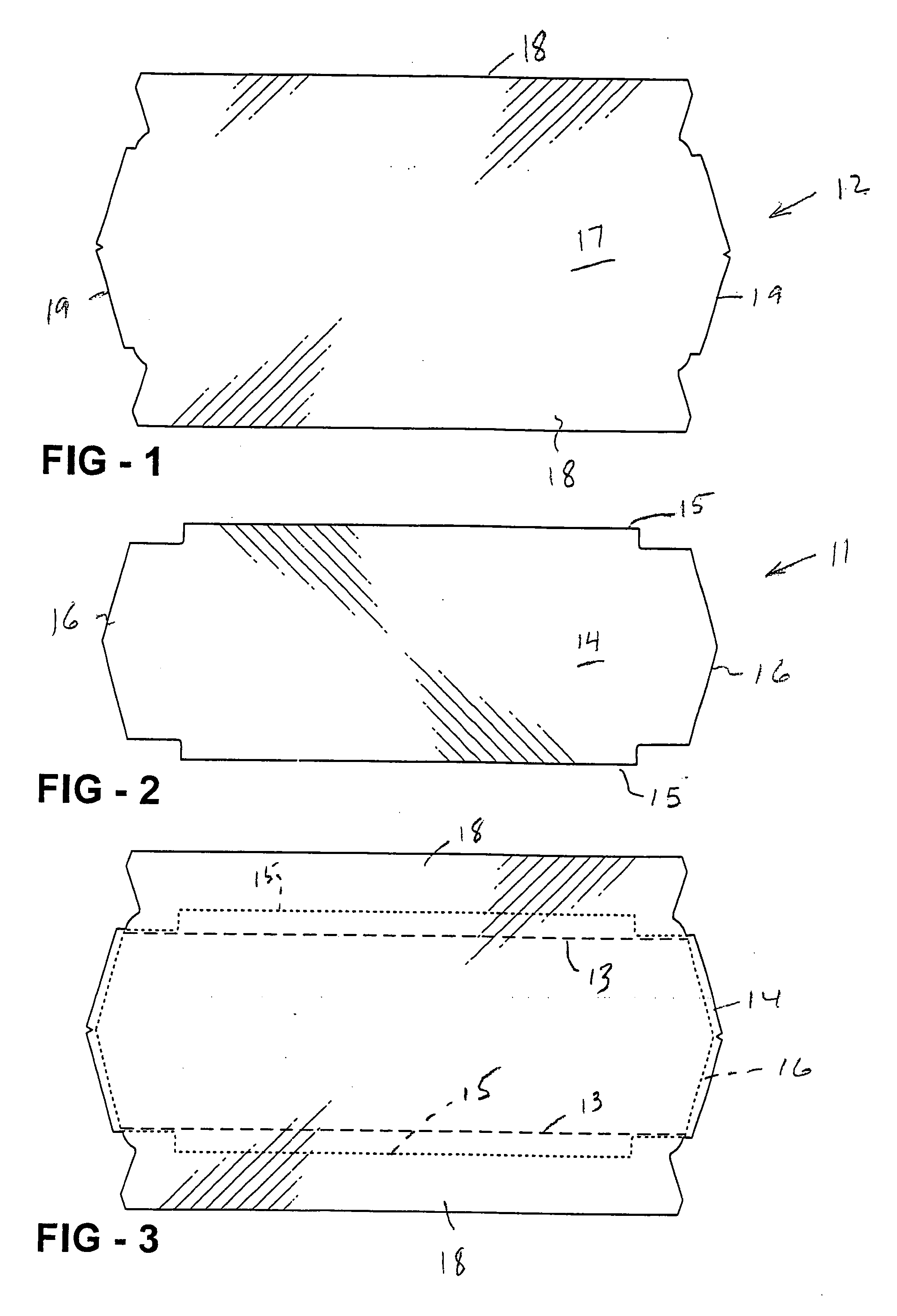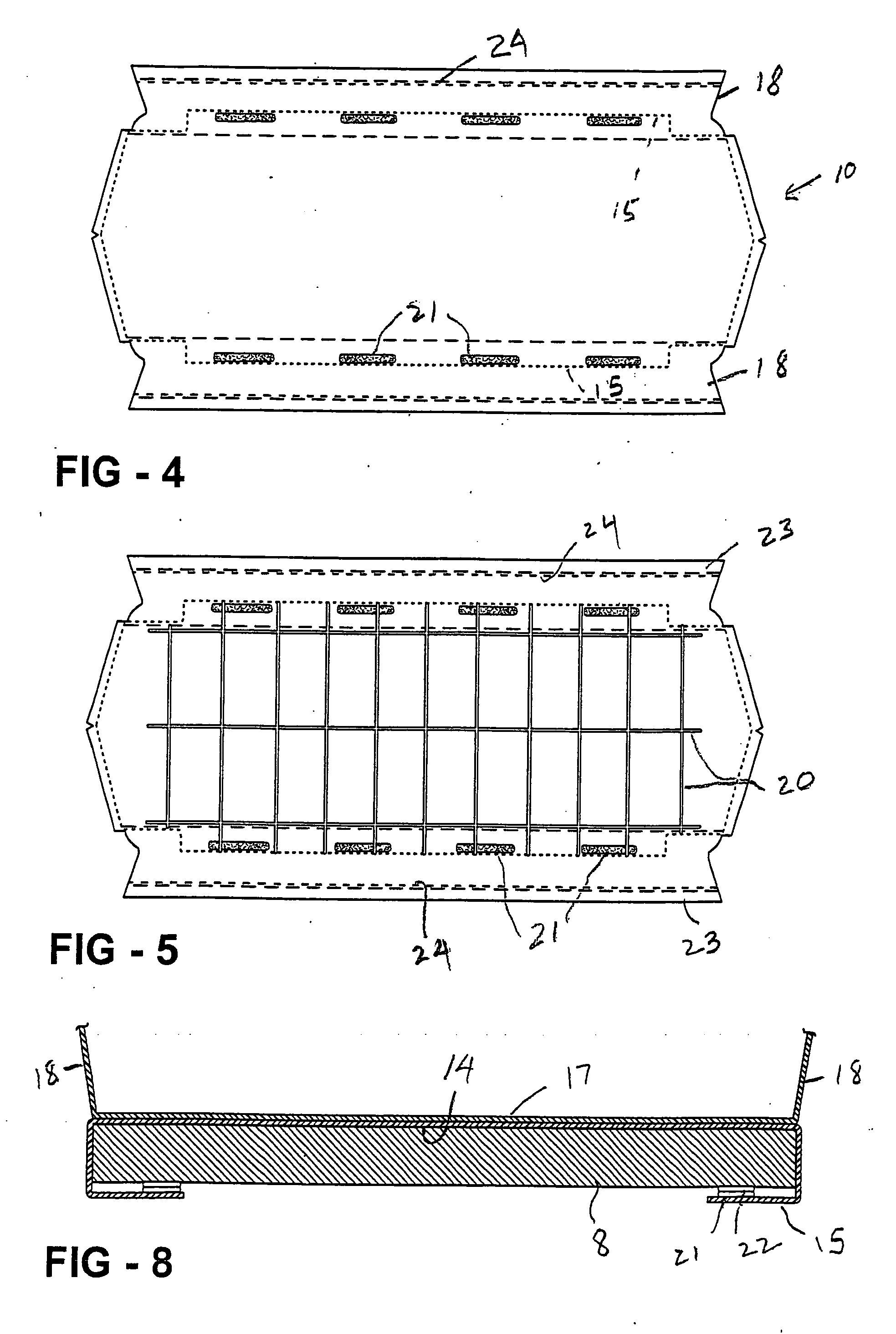However, in
emergency medicine procedures strapping cannot always be used because such strapping applies mechanical loads to the patient that may not be suitable for a patient having fractures or other injuries.
Strapping also may interfere with the immediate access to
open wounds and, occasionally, may not be
usable because of foreign objects embedded in or projecting from the patient's body.
When side rails of these kinds are provided on a
medical imaging support which also serves as a gurney or trolley, such side rails interfere with imaging in the lateral and oblique directions because of the radiolucent
opacity of metals and the artifact-causing abrupt density transition at the
metal / air boundaries.
Even though such side rails may be made of carbon
fiber composites to improve their radiolucency, the additional cost of such materials is substantial.
This may allow those body parts to extend into pinch points and danger zones associated with adjacent
medical imaging equipment, or otherwise create injury-prone situations.
This is of particular concern in
emergency medicine venues where the patient may not be able to cooperate with medical personnel by remaining stationary.
These requirements for removability and gap free mounting can be especially troublesome in meeting the need for haste in the installation of such rails inasmuch as some portions of the patient's body may not be clear at the installation zone, thereby creating a pinch point situation when a
solid plate rail is moved into its installed position.
Another problem encountered with removable, rigid side rails is that they present a physical location challenge when they are not in their installed position.
If such rails are fully removable they tend to be
set aside and left behind when a patient trolley or gurney is moved, thereby disrupting subsequent usage of the trolley or gurney until the missing side rails are retrieved.
If a side rail is hinged or otherwise mounted to the support so as to swing outward and downward to a storage position below the support top, the raising and lowering of such a side rail may be impossible while the trolley or gurney is located closely alongside another patient support, such as a stretcher or a surgical table, to which a patient must be moved for further treatment.
Such downward storage positions also may interfere with the close passage of medical
imaging equipment under the support top, inasmuch as such
imaging equipment often must be provided with a clearance below the support top for medically acceptable imaging precision.
If such rails are mounted so as to swing downward into a pocket in or below the support top, or are otherwise designed to be lowered without taking up any space either below or beyond the top, the pocket in the support inevitably causes the top to have an inconsistent radiolucent density across its area which creates artifacting for anterior-posterior imaging.
Such pocket designs also may involve an unacceptable compromise of structural strength, particularly in view of the necessity of making support tops increasingly stronger to support increasingly heavier patient populations while still maximizing such tops' radiolucency characteristics.
A related
disadvantage of rigid side rails of all types is that their removal, storage, and reinstallation require so much time that
patient survival may be compromised, especially in emergency
medicine situations.
Another problem with rigid side rails of all types that are fully removable is that they may not be safe for use on gurneys or trolleys for reception of patients from a helicopter.
Consequently, if a rigid side rail should inadvertently be raised into the path of movement of a rotor blade, a catastrophe could occur.
A still further problem with rigid side rails of all types, and particularly those used in emergency
medicine situations, is that their rigid nature can interfere with the positioning of certain patients who must be imaged while being equipped with devices such as emergency splints or backboards which, even though they need not be imaged themselves, may project beyond the boundaries of the patient's body to such an extent that the side rails cannot be installed when the patient is optimally positioned.
Quite apart from the foregoing undesirable characteristics of currently available patient security apparatus such apparatus presents problems in coping with
contamination prevention, cleaning, and physical damage.
It is well known that general medical imaging tables accumulate biological
contamination in film or
solid form from normal contact with patients'
skin, hair, and clothing and must be cleaned periodically.
At times, large quantities of blood and other fluids can contaminate the area around an emergency
medicine patient during the initial period of treatment.
If such fluids are not captured close to the patient, they may run off the table and contaminate lower parts of the gurney or trolley, associated medical
imaging equipment, or the floor under such equipment.
In addition, emergency medicine patients also sometimes arrive at a treatment site with foreign objects or broken bones projecting from their bodies in such manner as to present
cutting or
puncturing hazards to any vulnerable equipment at the site.
 Login to View More
Login to View More  Login to View More
Login to View More 


